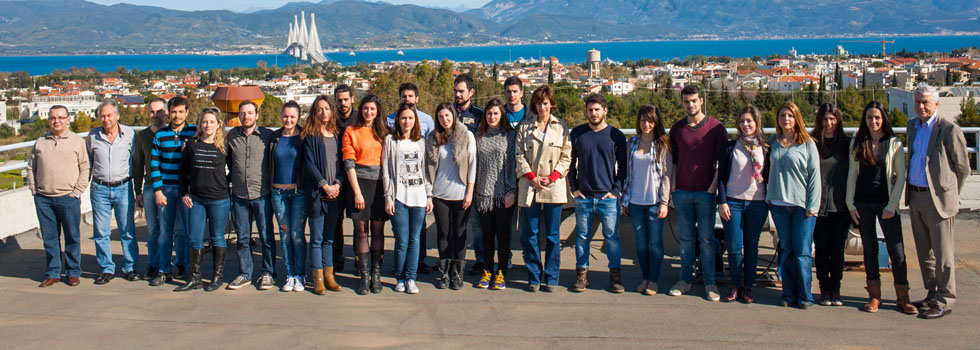Welcome to the Advanced Polymers & Hybrid Nanomaterials Research Laboratory!
![]()
The Advanced Polymers & Hybrid Nanomaterials Research Laboratory focuses on the design and development of novel polymeric and hybrid materials for advanced applications in energy, health and environmental sectors.
More specifically, materials for the new energy technologies are the main pillar of the current activities developing thus polymeric materials for PEM Fuel Cells and Li-Ion Batteries. Additionally, hybrid semiconducting polymer carbon allotrope nanostructures like fullerenes and nanotubes have been designed and synthesized with applications in the field of organic solar cells. In this case the semiconducting properties of the polymeric species are combined with those of the carbon allotropes.
Biocidal copolymers are also a key activity trying to develop proper copolymeric structures that provide antimicrobial or antifouling properties on polymeric surfaces or underwater sea paints and nets. Especially, in the case of the antifouling materials the main focus is on the introduction of organic antifouling species covalently bounded onto the surface of the specific nets in order to avoid release of the active substance and thus pollution of the environment. Additionally, by this way it is possible to drastically reduce heavy metal loads, which are currently used in such applications.
Functional Organic NanoParticles (NPs) are also developed as barrier or sensor materials in packaging applications especially in cases where biodegradable polymers are used. Metal NanoParticles and Metallocomplexes are being developed either as semiconductors for electronic applications or as biocidal materials in cases where the metal ions or the nanoparticles used can induce biocidal activities.
In order to have the ability to give solutions on the above practical challenges significant efforts are devoted to the development of new polymeric and hybrid structures through modern synthetic methodologies as well as the adjusting classical routes to the specific aims.
Thus, Atom Transfer Radical Polymerization (ATRP) has been used as a tool to synthesize new or complex copolymeric structures such as Double Hydrophilic Block Copolymers or Polymeric Brushes, Dendronised Polymers or Polymeric Metallocomplexes with High Metal Loadings, while traditional polymerizations techniques used under extreme conditions provide new High Temperature resistive polymers and new polymeric Electrolytes.
Physicochemical characterization of the newly formed polymeric materials and hybrids are performed in the solid and solution state.






